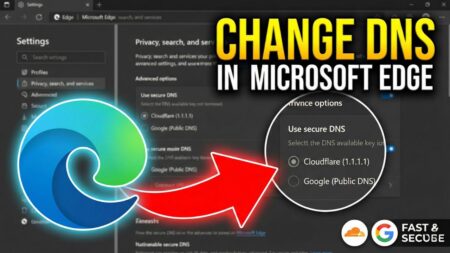Let’s face it—Google Chrome is awesome, but over time, it can start to feel sluggish. When you have dozens of tabs open, some extra extensions installed, and maybe a few background processes still running, Chrome can struggle to keep up.
The good news? There are several easy ways to make Chrome faster and restore that smooth browsing experience you love. Here are seven straightforward tips to get Chrome running at top speed!
1. Turn On Extended Preloading for Faster Page Loads
Did you know Chrome can actually predict which pages you’re likely to visit next? It’s called “preloading,” and it helps pages load faster by getting a head start on them. By turning on Extended Preloading, Chrome will load those next pages in the background, so they’re ready when you are.
How to Enable Preloading:
- Go to Chrome’s Settings.
- Head over to Privacy and Security.
- Look for Preload pages for faster browsing and searching and switch it on.
This can be a game-changer for those of us who love browsing at lightning speed.
2. Stop Background Apps from Running When Chrome is Closed
Ever noticed that Chrome sometimes feels like it’s still “on” even when you close it? That’s because certain apps keep running in the background. While this can be useful, it also uses up memory and slows down your computer. You can stop this by changing a simple setting, giving Chrome (and your computer) a much-needed break.
How to Disable Background Apps:
- Open Settings.
- Go to System.
- Toggle off Continue running background apps when Chrome is closed.
This way, Chrome will fully close when you close the window—no more sneaky background activity!
3. Use Hardware Acceleration for Smoother Graphics
Hardware acceleration is your best friend if you watch videos, play games, or use graphic-heavy sites in Chrome. When enabled, Chrome will use your device’s graphics card to handle intensive graphics, taking the load off your processor and making everything feel faster.
How to Turn On Hardware Acceleration:
- Go to Settings > System.
- Turn on Use hardware acceleration when available.
Once enabled, you may notice smoother videos and animations in your browser.
4. Reset Chrome Settings to Default
Sometimes, it’s best to go back to basics. If you’ve made many tweaks to Chrome over time and it’s not running as it should, resetting it can help. This won’t delete your bookmarks or passwords—it just removes unnecessary clutter that might be slowing things down.
How to Reset Chrome Settings:
- Go to Settings > Reset and clean up.
- Choose Restore settings to their original defaults.
It’s like giving Chrome a fresh start without losing your important info.
5. Remove Extensions You Don’t Use Anymore
Chrome extensions are great—they add new features and make browsing easier. But if you have many of them, they can seriously slow things down. Take a moment to go through your extensions and delete any that you don’t use.
How to Remove Unused Extensions:
- Click the puzzle icon in the toolbar.
- Go to Manage extensions.
- Find and remove any extensions you’re not using.
This cleanup can really speed up Chrome, especially if you’ve been hoarding extensions.
6. Switch to Google DNS for a Faster Connection
Switching your DNS settings can help Chrome find websites faster. Google’s DNS service is secure and optimized for speed, and it’s super easy to set up.
How to Enable Google DNS:
- Head to Settings > Privacy and Security > Security.
- Scroll to Use Secure DNS and select Google Public DNS.
With Google DNS, you’ll likely see a small, yet noticeable boost in speed—especially if your current DNS isn’t the best.
7. Turn On Chrome’s Memory Saver
If you’re a tab-hoarder (no judgment), Chrome’s Memory Saver is a lifesaver. This feature automatically frees up memory from tabs you aren’t using, so your active tabs can load faster. It’s a must-have for anyone who tends to keep lots of tabs open at once.
How to Enable Memory Saver:
- Go to Settings > Performance.
- Toggle on Memory Saver.
You should notice Chrome runs a lot smoother, even with tons of tabs open.
These are Seven easy tweaks to make Google Chrome faster and more efficient. Whether it’s enabling preloading, disabling background apps, or using Memory Saver, these adjustments can help Chrome run like new. Try these out and see which ones make the biggest difference for you!






